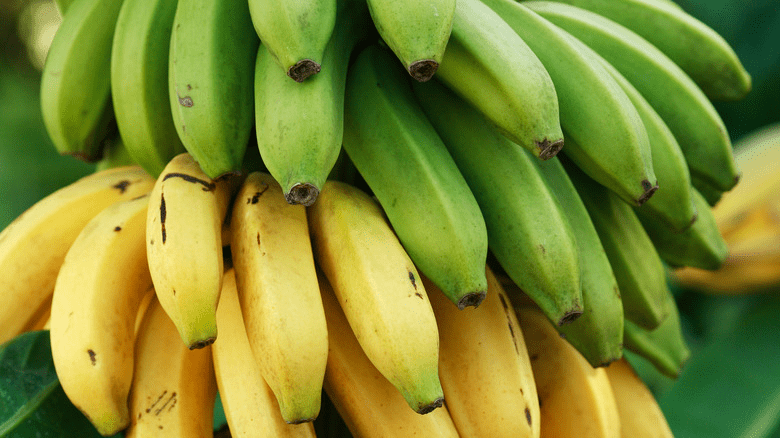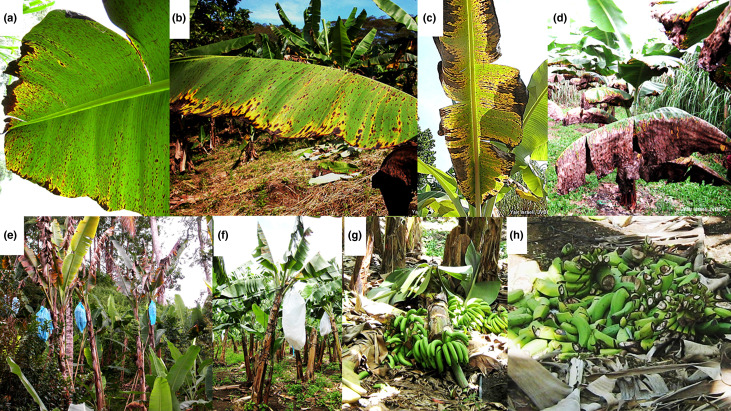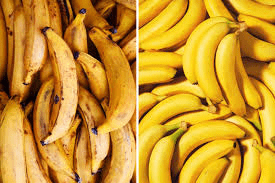Banana and plantain are vital components of diets in many parts of the world. Although they look similar, their uses in cooking differ significantly. Bananas are commonly eaten raw as a sweet snack, while plantains are typically cooked and used as a starchy side dish.
Both varieties are packed with essential nutrients, offering numerous health benefits and making them versatile ingredients in various cuisines. The widespread cultivation of banana/plantain highlights their global importance and enduring popularity.
Belonging to the Musaceae family, although they are often called tree crops, they are actually large shrubs with soft, false stems. Unlike traditional trees, they don’t have hard wood and typically die within two years after producing fruit only once in their lifetime.
Despite this, bananas are among the most important fruits in Nigeria. They are widely eaten raw as a sweet snack, dessert, or even as a meal. Plantains, on the other hand, are usually cooked, boiled, or roasted, but can also be eaten raw.
Uses of Banana and Plantain
Bananas from the Musa genus are a vital food source worldwide. For example, Musa textilis provides Manila hemp, and the fe’i banana is a food staple in Polynesia. Some Musa species are also used locally for fibers or as ornamental plants. Bananas are the second most produced fruit globally, after grapes.
Ripe bananas are sweet and easy to digest, eaten raw as a dessert. Unripe bananas are cooked and serve as a starchy food, similar to potatoes, and are known as plantains, although both are botanically bananas.
Bananas are particularly important in Africa, where they are a staple starchy food. Banana chips are made from fully mature, unripe bananas, and banana flour and powder are used in various food products. Bananas are recommended for children with celiac disease and people with intestinal issues.
In Eastern Asia, banana male buds are boiled and eaten as vegetables, and other parts of the plant, like the inner leaf sheath, are also consumed. The pseudo-stems and leaves can be used as livestock feed, and green leaves are often used as plates, wrapping materials, and even umbrellas. Dried leaves and stems are used for thatching and making mats.
Bananas also serve as shade for crops like cocoa and coffee. The split stems and leaves are good mulch for perennial crops. The sap from the plant can stain fabrics and is used for marking bills. In Nigeria, a popular way to eat bananas or plantains is by frying them into Dodo, which is often served with rice and vegetable sauce.
Read Also: How to Process, Package, and Export Bananas and Plantains
Origin and Distribution of Banana and Plantain

All edible bananas, except the Fe’i variety, come from Musa acuminata and Musa balbisiana species. These bananas originated in the Malesian region and were transformed from wild plants into productive crops through human selection and vegetative propagation.
Simmonds (1962) discusses the spread of bananas into Africa, suggesting they may have reached Madagascar from Indonesia around the 5th century A.D. and later spread across Africa. Some believe the Portuguese introduced bananas to Africa in the 15th century and then to the Canary Islands.
1. Cultivars
Banana cultivars are grouped by their genomes. They are cloned and usually propagated vegetatively. There are an estimated 200-300 clones, with the majority being triploids, which are hardier and easier to grow.
The Gros Michel banana is known for its quality but is susceptible to Panama disease. The Cavendish subgroup has four commercially important clones, while the Plantain subgroup is a significant food source in India, Africa, and tropical America.
2. Ecology
Bananas thrive in tropical, humid lowlands, typically growing between 30° North and South of the equator. The optimal temperature is around 27°C. High temperatures can cause sun-scorch, while temperatures below 21°C slow growth and reduce leaf production.
Bananas need a lot of sunlight and water, ideally 25mm of rainfall per week, with an annual total of 2000-2500mm. They can also be grown with irrigation in drier areas. Windbreaks are necessary as strong winds can damage or destroy banana plants.
Bananas grow well in a variety of soils as long as there is good drainage, fertility, and moisture. The best soils are deep, well-drained loams rich in humus, often of volcanic or alluvial origin. Acidic soils should be avoided. Fertilizer should be applied early to support flowering and bunch size.
3. Germination
Banana seeds should be removed from ripe fruits and planted immediately for best germination results. If seeds need to be stored, they should be carefully washed, dried, and stored over dry calcium chloride. Germination rates are generally low, with only about 20% of seeds germinating, and many of these producing non-viable plants.
Chemical Composition
The edible pulp of ripe bananas, which makes up about two-thirds of the fruit, contains approximately:
i. Water: 70%
ii. Carbohydrate: 27.1%
iii. Protein: 1.2%
iv. Fat: 0.3%
v. Fiber: 0.5%
vi. Ash: 0.9%
The caloric value is about 100 calories per 100g, making bananas nutritionally similar to potatoes. Carbohydrates are stored as starch in unripe bananas but convert to sugars like glucose and fructose as they ripen. Bananas are rich in vitamin A, moderate in vitamin C, and low in vitamin B. All parts of the plant are high in potassium.
Propagation
Bananas are propagated vegetatively, not from seeds, except in breeding. The planting materials include:
1. Peepers: Very young suckers with only scale leaves.
2. Sword suckers: Suckers with narrow sword leaves, planted when about 75 cm high and with a corm diameter of about 15 cm.
3. Maiden suckers: Taller suckers with broad leaves that haven’t yet produced a bunch. They are 5-8 months old with corms about 25 cm in diameter. After lifting, they are cut down to 10-15 cm above the corm, with the central meristem destroyed, and roots trimmed before planting.
4. Bits and large corms: Cut from bull heads (corms with bunches) into pieces containing one or more eyes, weighing over 2.5 kg. These are planted 25-30 cm deep.
5. Water suckers: Suckers of superficial origin with broad leaves.
Field Establishment for Banana and Plantain
The first crop after planting is called the plant crop, with subsequent crops known as rations. For new forest areas, the land is cleared, drained, and lined out before planting. Larger trees are felled, and lower branches are lopped later.
Bananas are sometimes interplanted with other crops like coconuts. When used as a nurse crop for cocoa or other crops, bananas are planted a season before and gradually thinned out over 4-6 years.
The spacing is typically 5 meters between plants, and the bananas are planted in holes about 45 x 45 cm, with the suckers’ eyes 25-30 cm below the soil surface. Fertile soil or regular fertilizer application is crucial for good yields, with a high demand for nitrogen and potassium.
Read Also: The Plantain Ovary: Economic Importance, Uses, and By-Products
Harvesting and Yields of Banana and Plantain
Bananas are harvested 9-18 months after planting, depending on the cultivar and conditions. The time from shooting to harvest is 2-4 months. The maturity stage for harvesting depends on local use or shipping, with three-quarters full (90 days from shooting) being ideal for export.
Yields are highest in the plant crop and decline in subsequent rations. With proper management and favorable conditions, yields can reach up to 50 tons per hectare. The average lifespan of a banana field varies between 3-20 years.
Diseases and Pests of Banana and Plantain

Bananas are susceptible to several diseases, including:
- Panama disease (banana wilt): A devastating disease caused by Fusarium oxysporum.
- Leaf spot (Sigatoka disease): A fungal disease that destroys foliage.
- Black leaf streak: Another serious disease.
- Bacterial wilt.
- Fruit rots.
- Bunchy top virus.
- Mosaic.
- Heart rot.
Major pests include:
- Banana borer.
- Banana rust thrips.
- Burrowing nematode.
In summary, by the end of this article, you should have a better understanding of bananas and plantains. They are crucial crops in tropical and subtropical regions and are widely used around the world. You have learned about their uses, origins, distribution, cultivars, ecology, germination, propagation, production, harvesting, yields, and the diseases and pests that affect them.

